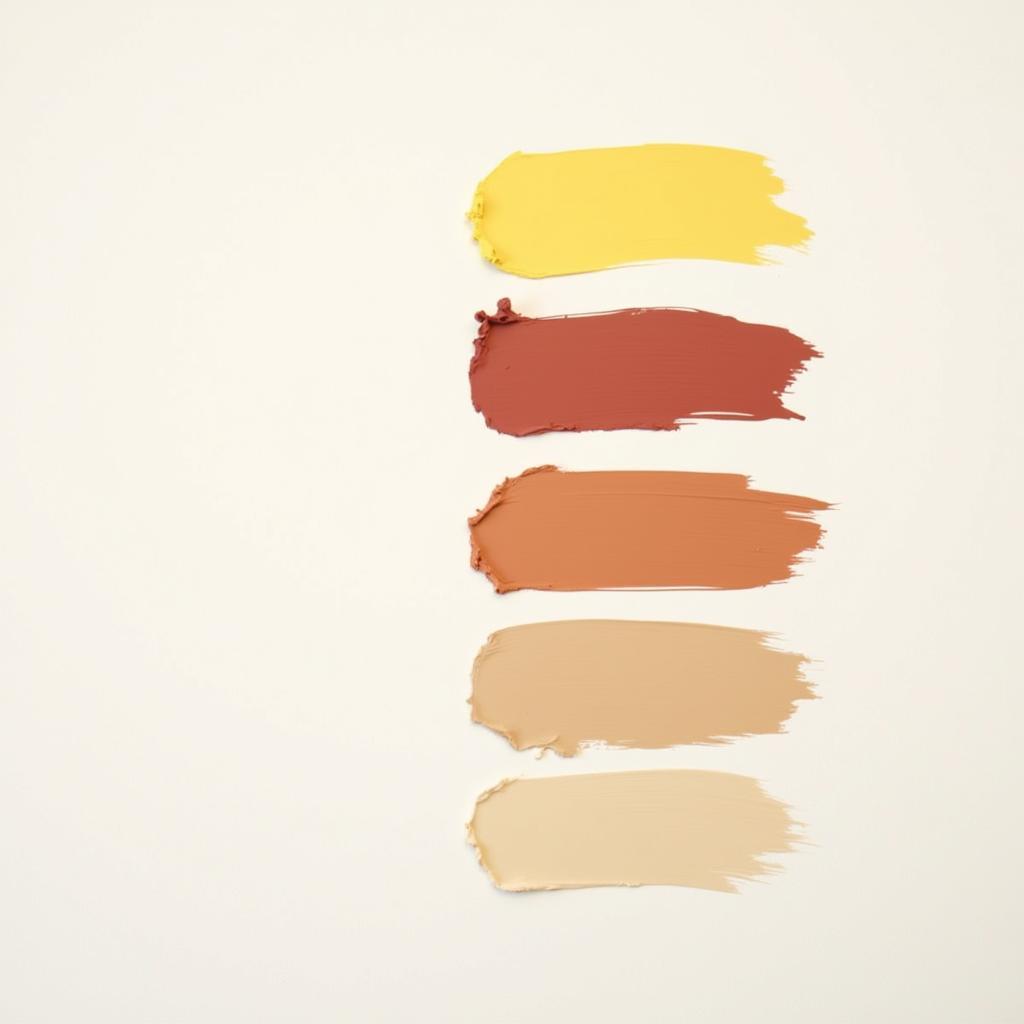Cream, a color that whispers of comfort and elegance, can transform any space into a haven of tranquility. Whether you’re aiming for a cozy farmhouse aesthetic or a sleek, modern vibe, cream colored paint serves as a versatile backdrop for your design dreams. But what happens when you can’t find the perfect shade of cream at the store? The answer is simple: you make it yourself!
Mixing your own paint provides the freedom to curate a custom color that perfectly complements your vision. This guide will walk you through the process of creating cream colored paint, empowering you to become a master of your own color palette.
Understanding the Basics of Color Mixing
Before we delve into the art of crafting the perfect cream, let’s brush up on the fundamentals of color theory.
- Primary Colors: Red, blue, and yellow reign supreme as the foundation of the color spectrum. These hues cannot be created by mixing other colors, but their combinations give birth to a myriad of shades.
- Secondary Colors: Mixing any two primary colors in equal parts results in a secondary color. For instance, blending red and blue creates violet, while yellow and blue produce green.
- Tertiary Colors: Combining a primary color with an adjacent secondary color on the color wheel leads to the formation of tertiary colors. Examples include red-violet and blue-green.
Crafting Your Cream Colored Paint
Now, let’s bring our cream dream to life. You’ll need the following:
- White Paint: This will be the base of your cream. Opt for a titanium white for a bright and opaque finish.
- Yellow Paint: A touch of yellow adds warmth to your cream. Yellow ochre, a natural earth pigment, is an excellent choice for its subtle, earthy undertones.
- Red Paint: Adding a tiny amount of red, such as burnt sienna or a touch of alizarin crimson, can prevent the cream from appearing too yellow and create a richer, more nuanced shade.
- Brown Paint: Raw umber, with its natural warmth, can be added in minuscule amounts to deepen the cream and add complexity. Use this sparingly!
- Palette: A clean palette provides a surface for mixing your colors.
- Palette Knife: This tool enables smooth and even blending of the paint.
Step-by-Step Guide:
- Start with White: Squeeze a generous amount of titanium white onto your palette.
- Introduce Yellow: Gradually add small dabs of yellow ochre to the white paint. Remember, a little goes a long way! Mix thoroughly after each addition.
- Fine-Tune with Red (Optional): If desired, incorporate a tiny amount of red paint to subtly neutralize any excessive yellowness. Again, blend thoroughly.
- Deepen with Brown (Optional): For a richer, more complex cream, cautiously add a minute amount of raw umber. Blend thoroughly and observe the color shift.
- Test and Adjust: Before committing to your creation, test the color on a hidden section of your wall or a piece of sample board. Allow the paint to dry completely to assess the true color. If needed, make further adjustments by adding more white, yellow, red, or brown until you achieve your perfect cream.
Tips for Success:
- Start Small: When mixing colors, always begin with small amounts. It’s easier to gradually add more pigment than to correct an overly saturated mix.
- Document Your Ratios: Keep track of the paint ratios used to create your ideal cream. This allows for easy replication should you need more paint in the future.
- Natural Light Matters: Color perception can vary significantly depending on the lighting conditions. Observe your mixed cream in both natural and artificial light to ensure it meets your expectations.
 Testing Cream Paint Swatches on a Wall
Testing Cream Paint Swatches on a Wall
Cream: A Color That Inspires
Cream’s versatility extends beyond its ability to create a sense of warmth and serenity. This adaptable hue seamlessly complements a wide range of decorating styles.
- Modern Minimalism: Cream provides a clean and sophisticated backdrop for minimalist interiors, allowing statement furniture and bold accents to take center stage.
- Rustic Charm: Paired with natural wood tones and vintage accents, cream evokes a sense of cozy nostalgia, perfect for creating a farmhouse-inspired haven.
- Coastal Tranquility: Cream’s soft and airy nature complements the serene ambiance of coastal décor. Imagine sun-drenched rooms with whitewashed furniture and pops of ocean-inspired blues and greens.
Beyond the Walls: Exploring Cream in Design
Cream’s versatility extends far beyond wall color. Incorporate this hue into your décor through:
- Furniture: A cream-colored sofa instantly elevates the sophistication of your living room, while a distressed cream dresser adds vintage charm to a bedroom.
- Textiles: Cream curtains diffuse sunlight beautifully, casting a soft and inviting glow throughout your space. Consider incorporating cream throw pillows, rugs, and blankets for added warmth and texture.
- Accessories: Introduce subtle touches of cream through vases, candles, and artwork to create a cohesive and elegant design.
By mastering the art of creating cream colored paint and exploring its endless design possibilities, you can transform your home into a sanctuary of style and tranquility. Remember, the most important ingredient in this creative journey is your personal touch. Embrace the process, experiment with different shades and applications, and allow your unique style to shine through.
FAQs
Can I use acrylic paint to make cream colored paint?
Absolutely! Acrylic paints are versatile and work well for DIY paint projects. Ensure you choose acrylic paints specifically designed for walls or furniture, depending on your project needs.
How do I prevent my cream paint from looking too yellow?
Adding a touch of red paint, such as burnt sienna or alizarin crimson, can help neutralize any excessive yellowness in your cream mix. Start with a very small amount and gradually increase until you achieve the desired balance.
What is the best type of brush to use with cream colored paint?
For a smooth and even finish, opt for a high-quality synthetic bristle brush. These brushes are designed for water-based paints and provide excellent coverage with minimal brushstrokes.
Can I use cream colored paint on furniture?
Yes, cream colored paint can beautifully transform furniture. Be sure to choose a paint specifically formulated for furniture and apply a protective topcoat to enhance durability and prevent scratches.
Where can I find inspiration for using cream colored paint in my home?
Online platforms like Pinterest and Instagram are treasure troves of interior design inspiration. Search for keywords like “cream colored walls,” “cream living room,” or “cream bedroom” to explore a plethora of stunning visuals and gather ideas for your own space.
Need Help Creating Your Dream Space?
We understand that embarking on a home transformation can be both exciting and overwhelming. If you’re seeking expert guidance and support in selecting the perfect cream paint or crafting a personalized color palette for your home, our team at Color Box Hanoi is here to help.
Contact us today:
Phone Number: 0373298888
Email: SEO.backlink@gmail.com
Address: 86 Cầu Giấy, Hà Nội.
Our dedicated team of color experts is available 24/7 to provide you with personalized advice, answer your questions, and guide you through every step of your color journey. Let us help you transform your house into a home you’ll love.
